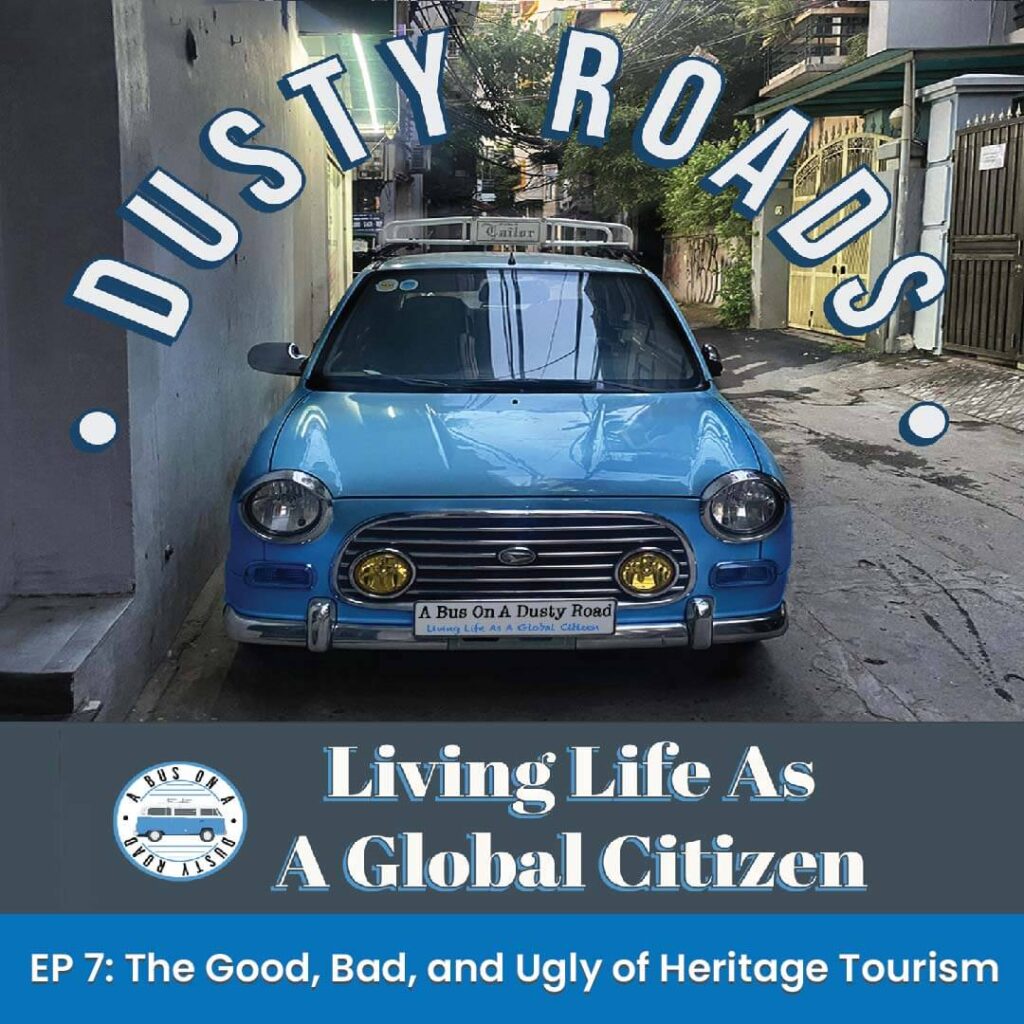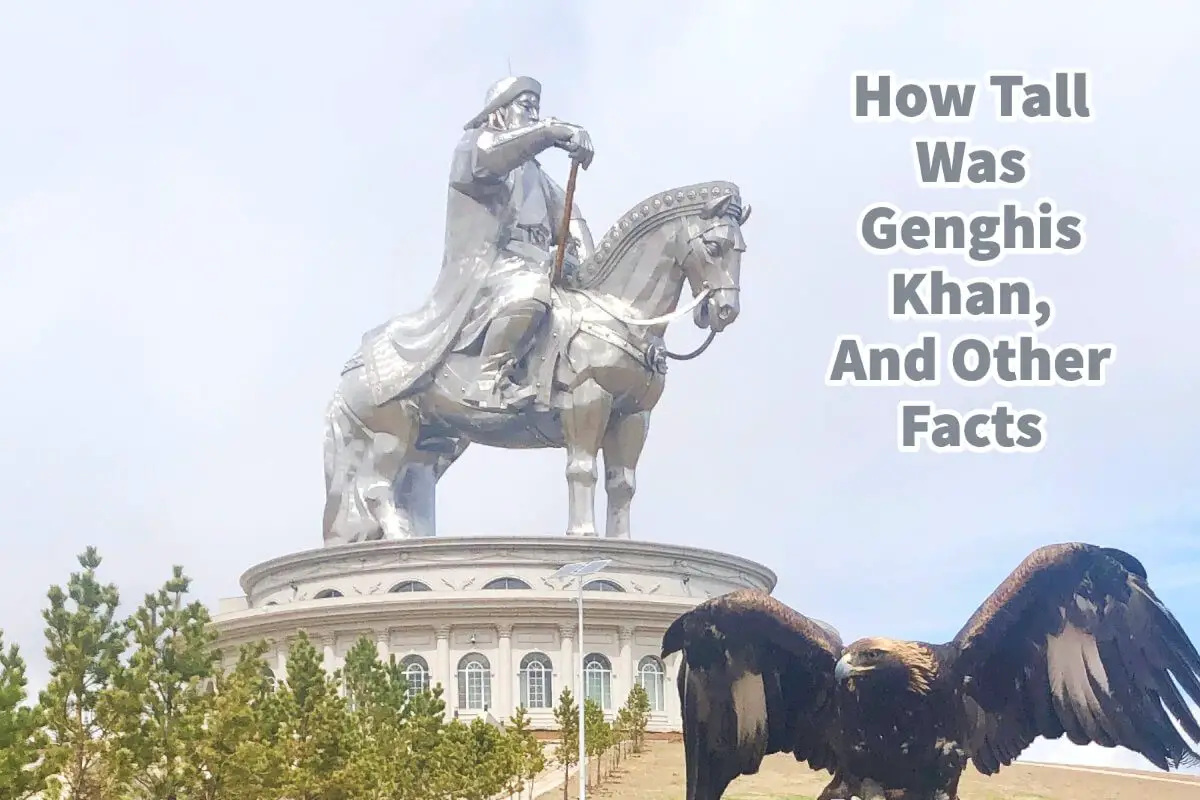When history talks about the famous Mongolian warrior Genghis Khan, they talk about him as a giant or extremely tall. Even today in Mongolia, you can see a statue outside the Ullanabaator that shows a giant Genghis Khan.
No account defines Genghis Khan’s height or appearance, but most records describe him as tall, strong, and with a mane of hair and a long flowing beard. During his lifetime, men were not very tall, so if Genghis Khan were even 5’ 11” or 6’ tall, he would have been considered very tall; if he were taller than that, he would have been considered a giant.
Table of Contents
- How Tall Was Genghis Khan?
- Genghis Khan Is A Legend
- Genghis Khan And Mongolia’s Soviet Era
- 10 Reasons Why Genghis Khan Is Still an Important Symbol for Mongolia
- Frequently Asked Questions
- Related Questions
How Tall Was Genghis Khan?
No account tells us exactly how tall Genghis Khan was, but we need to remember that today, most people are taller than the average height was years ago. The average size of a man during the time of Genghis Khan would have been 5’ 7” tall.
Even today, the average Mongolian man is 5’ 8” tall, the same average as Chinese men today. South Korea has an average of 5’ 9” tall. But countries like Sweden average 5’ 11.5” or almost 6′ tall.
So, looking at all these averages, if Genghis Khan even reached 6’ or 6′ 4″ tall, he would have been considered a giant during his time. Even in present-day Mongolia, he would have been well above the national average and be considered very tall.
Genghis Khan Is A Legend

There is no doubt that Genghis Khan is a legend, but still, we have no definitive record of his appearance or height. He was maybe not that tall, but because he was such a fierce warrior and conquered so much territory, his legend, size, and stature may have gotten exaggerated.
We know little about Genghis Khan’s personal life or physical appearance for such an influential historical figure. No contemporary portraits or sculptures of him have survived, and the information historians do have is usually not considered reliable.
Here is how most accounts describe Genghis Khan:
- Tall And Strong – Most reports describe Genghis Khan as tall and robust.
- Mane Of Hair And Beard – Genghis Khan is described as having a flowing mane of hair and a long, bushy beard.
- Red Hair And Hazel Eyes – The Persian chronicler Rashid al-Din said that Genghis Khan had red hair and green eyes. If he had had red hair and hazel eyes, it would have added to his allure and appearance; red hair and hazel eyes are not typical in Mongolia.
We are not sure if Genghis Khan had red hair and hazel eyes; some people say it is more likely he had yellow eyes, as some Mongolians are known to have almost green or yellow eyes. His red hair could also have been black with red tints due to the sun.
The account that Rashid al-Din gave was written long after Genghis Khan had died, so we know that he never saw Genghis Khan in person and could not provide a first-hand account of Genghis Khan.

Listen To Our Podcast About How Tall Was Genghis Khan? Below or by clicking here.
Genghis Khan And Mongolia’s Soviet Era
Mongolia was a socialist state from 1921 to 1992. During the Soviet Era of Mongolia, Genghis Khan was not celebrated and, in fact, almost forgotten.
The Soviet Union worked hard to scrub the history and memory of Genghis Khan from the Mongolians; his image and name were suppressed during the Soviet rule of Mongolia for seventy years.
Under Soviet rule, the Genghis Khan image was banned, and the Mongolian nation was encouraged to accept new Communist heroes like Khorloogiin Choibalsam, who came to power in 1928, or Colonel Sukhbaatar, a hero of the Soviet revolution.
During this time, Mongolians did not dare talk about Genghis Khan. Genghis Khan was not taught in any of the schools, and no information about him was available. We do not know how much information during the 70 years of the Soviet repression of Genghis Khan was lost, dismissed, or even destroyed.
But we do know that today, Genghis Khan is revered in Mongolia. He is seen as a force of good and serves as a symbol to the Mongolian people of national power and unity.
His legend of being larger than life continues to play an essential role in the lives of the Mongolian people. Outside the Mongolian capital, Ulaanbaatar, is the Equestrian Statue of Genghis Khan that you can go to visit.
To learn more about the Genghis Khan Equestrian Statue, you can read our blog about Mongolia’s Genghis Khan Statue: Mongolia’s Love for Genghis Khan by clicking here.
10 Reasons Why Genghis Khan Is Still an Important Symbol for Mongolia
Genghis Khan is more than just a historical figure for Mongolia. He’s an emblem of the nation’s identity, heritage, and pride.
Here are ten reasons why Genghis Khan continues to be a significant symbol for Mongolia:
- Founder of the Mongol Empire: Genghis Khan united the various nomadic tribes of the Mongolian plateau and founded the Mongol Empire, which became the largest contiguous land empire in history. This achievement has left an indelible mark on the national consciousness.
- The Epitome of Leadership: Genghis Khan’s leadership qualities – from his strategic insight to his ability to inspire loyalty – have made him an enduring symbol of what it means to be a great leader. Many in Mongolia still emulate his leadership style as a model.
- Cultural Preservation: Under his rule, there was a flowering of Mongol culture, arts, and traditions. While the empire expanded, it absorbed aspects of other cultures but always retained a distinct Mongolian identity.
- Promotion of Religious Tolerance: Genghis Khan was known for his religious tolerance, which is often cited as a reason for the Mongol Empire’s stability. He allowed people of various faiths to practice their religion freely, setting an example of pluralism.
- Mongolian Identity and Unity: Genghis Khan is seen as a figure who united the Mongols and forged a strong sense of national identity. Even today, his legacy serves as a rallying point for Mongolian unity and pride.
- Innovative Administration: Genghis Khan implemented innovative administrative reforms, including a written code of law (Yassa) and an efficient postal system (Yam). These systems played a significant role in governing and connecting the vast territories of the Mongol Empire.
- Economic Legacy: The establishment of the Silk Road under Mongol protection led to an era of increased trade and economic prosperity. Genghis Khan’s influence thus extends to Mongolia’s economic history and its role in global commerce.
- Symbolism in Modern Mongolia: Genghis Khan’s influence is omnipresent in present-day Mongolia. Ulaanbaatar’s international airport is named after him, and his image appears on Mongolian currency, and a massive stainless-steel statue of him on horseback stands on the banks of the Tuul River near the capital.
- Inspiration for Arts and Literature: Genghis Khan’s life and the rise of the Mongol Empire have inspired countless works of art, literature, and music in Mongolia. His legacy permeates Mongolian creative expression, from traditional long songs to contemporary novels.
- A Beacon for Global Recognition: For many people worldwide, Genghis Khan is the first thing that comes to mind when they think of Mongolia. His legacy gives Mongolia a distinct identity on the global stage, making him a crucial symbol for international recognition.
Genghis Khan’s influence on Mongolia is multifaceted and deep-rooted. He remains a potent symbol of the nation’s past achievements, current identity, and future aspirations.
At A Bus On A Dusty Road, we talk about everything about travel, life, sailing, and ex-pat living. We are all about “Living Life As A Global Citizen.” We explore social, cultural, and economic issues and travel.
We would love to have you be part of our community. Sign up for our newsletter to keep up-to-date by clicking here. If you have any questions, you can contact me, Anita, by clicking here.
Listen to our Podcast called Dusty Roads. You can find it on all major podcast platforms. Try out listening to one of our podcasts by clicking here.
Subscribe to our A Bus On A Dusty Road YouTube Channel filled with great videos and information by clicking here.
Frequently Asked Questions
How tall was Genghis Khan?
The exact height of Genghis Khan is not known, but he was likely around 5’8″ to 5’10” (173-178 cm) based on historical accounts and comparisons to the average height of men in his region and time period.
Was Genghis Khan considered tall for his time?
No, Genghis Khan was not considered particularly tall for his time. His height was likely average or slightly above average for a man in his region and time period.
Did Genghis Khan’s size contribute to his success as a conqueror?
Genghis Khan’s size did not directly contribute to his success as a conqueror. However, his leadership, military tactics, and ability to unite various tribes under his rule were crucial factors in his conquests
Was Genghis Khan’s height a subject of interest during his lifetime?
There is no evidence to suggest that Genghis Khan’s height was a subject of particular interest during his lifetime.
What other physical characteristics were notable about Genghis Khan?
Other physical characteristics that were notable about Genghis Khan include his red hair, long beard, and flat nose, which were unusual for his region and time period.
Did Genghis Khan’s height have any impact on his leadership style?
There is no evidence to suggest that Genghis Khan’s height had any impact on his leadership style or decision-making abilities.
Was Genghis Khan’s height considered a disadvantage in battle?
Genghis Khan’s height was not considered a disadvantage in battle, as physical size was not necessarily a determining factor in military success at the time.
Did Genghis Khan’s height have any impact on his portrayal in modern media?
Genghis Khan’s height is not a major factor in his portrayal in modern media, as his leadership and military achievements are the primary focus.
Related Questions
Mongolia’s Genghis Khan Statue: Mongolia’s Love for Genghis Khan
The Genghis Khan Statue Complex is outside Ulaanbaatar, Mongolia. This statue commemoration of the Mongolian leader, Genghis Khan, who ruled Mongolia in the early 1200s. Despite his challenging childhood, Genghis Khan rose to become one of the greatest and most powerful leaders of his time. Genghis Khan and his army conquered many parts of the world, including part of China, to the present-day Capsian Sea area.
By clicking here, you can discover Mongolia’s Genghis Khan Statue: Mongolia’s Love for Genghis Khan.
Are Hmong People And Mongol People Related?
The Hmong people are from China and have migrated to southeast Asia, mainly Vietnam, Laos, Thailand, and Myanmar (Burma). The Mongols, also known as Mongolians, live mainly in Inner Mongolia (China) and Mongolia. The Hmong mainly live in the mountains, whereas the Mongols are nomadic herders.
By clicking here, you can discover Are Hmong People And Mongol People Related?
Is It Safe To Visit Mongolia?
Mongolia is generally safe to visit, but there are specific safety precautions that you should take when you are traveling in Mongolia for any traveler. There are areas in the city you should be extra cautious when traveling. Also, if you are out in the countryside, there are safety concerns you need to be aware of.
You can find out more by reading our blog, Is It Safe To Visit Mongolia? Staying Safe While Traveling Mongolia by clicking here.

